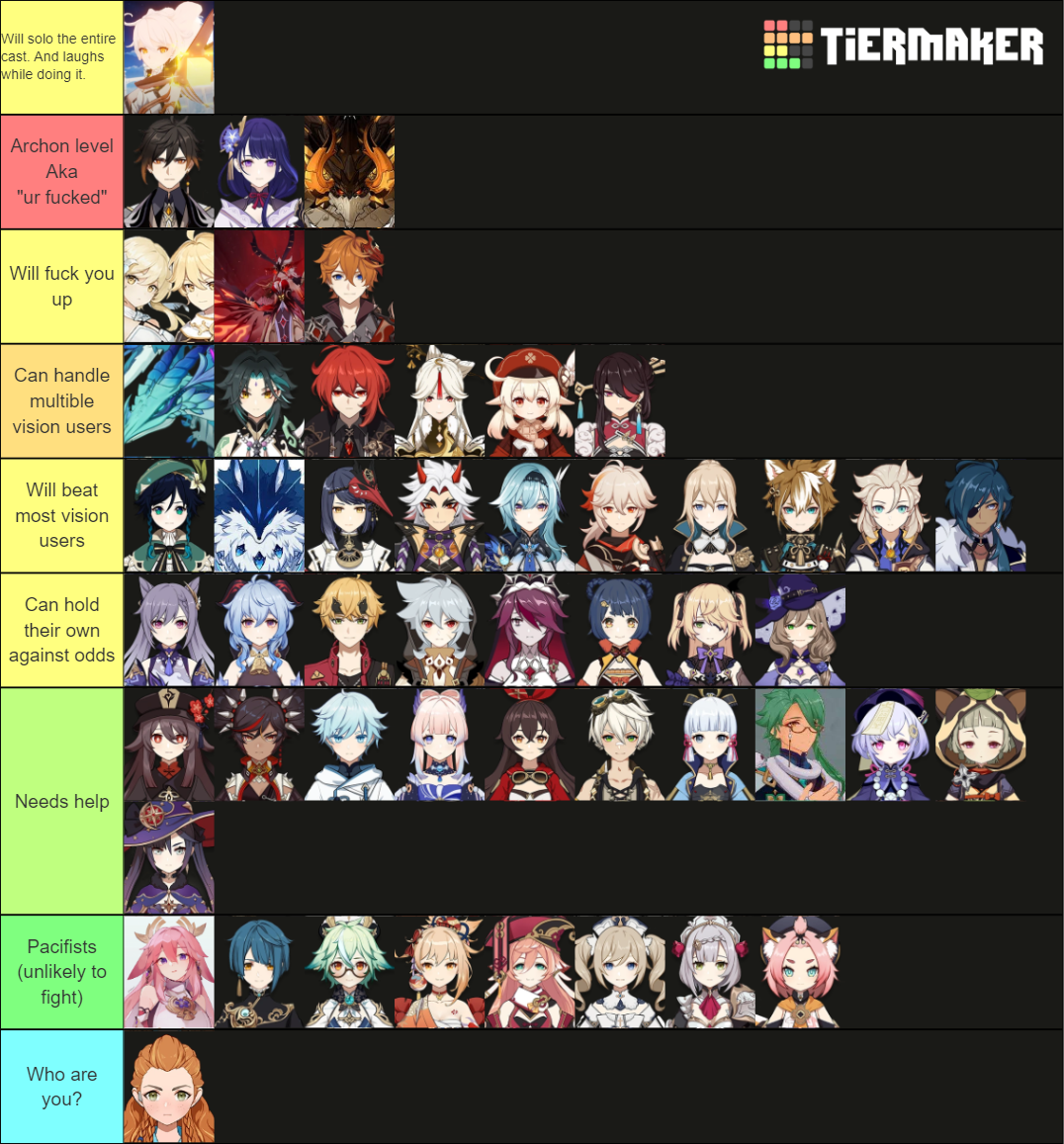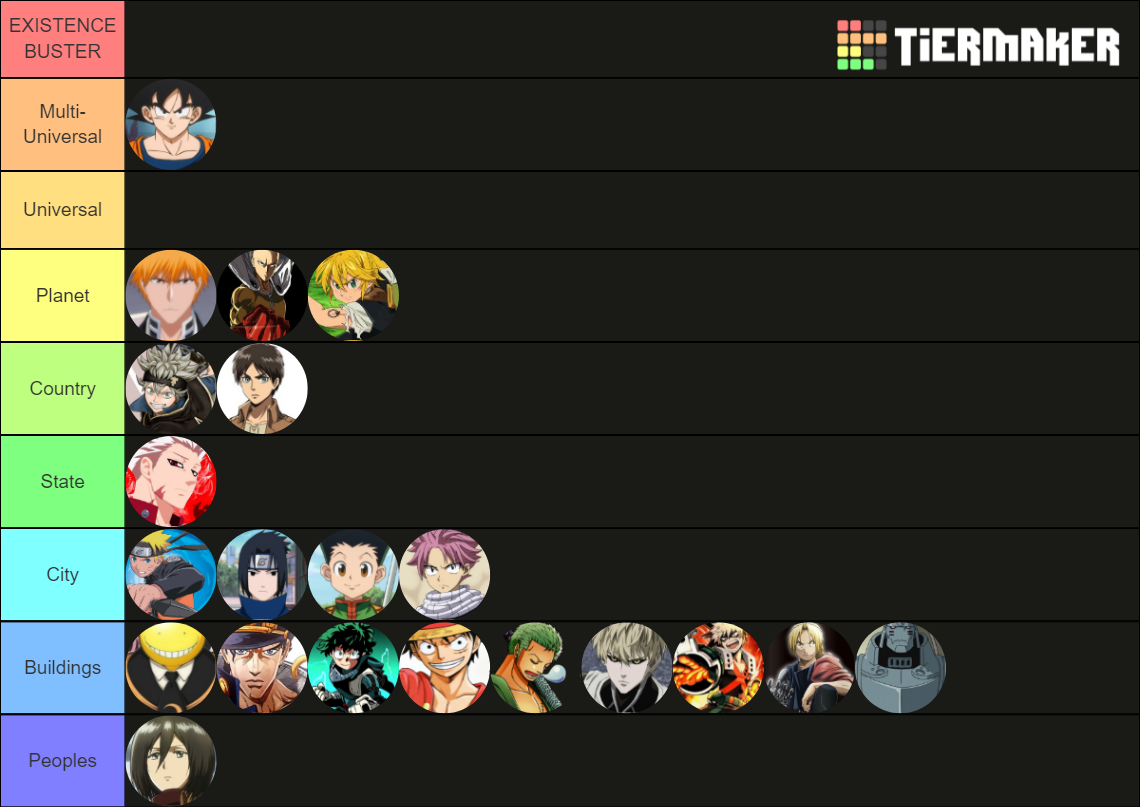In the vast, ever-expanding multiverse of fiction, have you ever wondered how we quantify the seemingly infinite power of characters and objects? Powerscaling, the art of comparing and contrasting feats to establish a hierarchy of strength, offers a fascinating framework for understanding these intricate power dynamics.
At its core, powerscaling is a methodical approach to assessing the abilities, attributes, and feats of fictional characters, entities, and objects. It employs various systems, drawing inspiration from scientific principles, mathematical concepts, and philosophical frameworks, to create a comprehensive and, ideally, objective ranking system. This allows us to compare characters from different universes, genres, and even media, providing a common ground for debate and analysis. The objective is not to declare a winner or loser definitively, but to understand the relative capabilities of characters within a standardized framework.
The foundation of many powerscaling systems is the concept of "tiering." This involves categorizing characters based on their demonstrated feats, with each tier representing a specific level of power or scope of influence. This hierarchical system allows for a structured comparison, moving from the mundane to the cosmic. This includes considerations of not just destructive capacity, but also hax abilities, durability, and speed.
The framework for power scaling is complex and multi-layered. It takes into account various factors when assessing a character's power, including, lifting strength, destructive capacity, and speed.
When evaluating the strength of a character, many begin with the examination of material feats, such as the ability to move objects, withstand physical forces, or manipulate matter. However, power scaling systems extend far beyond simple physical strength, encompassing a character's ability to affect their environment, manipulate energy, and even transcend the boundaries of space and time. The idea of speed, is simply how fast an object or entity can move in a given amount of time, which can prove to be a more decisive element than sheer power in determining the outcome of a battle.
| Category | Details |
|---|---|
| System Name | Powerscaling Tiering System |
| Purpose | Categorizing and indexing fictional characters, entities, and objects based on their feats and scopes. |
| Main Metric | Feats and Abilities |
| Inspiration Sources | VS Battles Wiki, CSAP, FCAOS, PSW |
| Key Concepts | Dimensionality, Levels of Existence, Destructive Capacity, Speed Tiering |
| Notable Tiers | Street Level, Planet Buster, Star Tier, Multiversal, Outerversal |
| Speed Types | Combat Speed, Reaction Speed, Travel Speed |
| Application | Used in debates, character analysis, and fictional media discussions. |
| Criticisms | Subjectivity, Interpretation of feats, Bias in analysis. |
| Resource | VS Battles Wiki |
This approach allows for an organized method of comparing characters and their capabilities. It is a continuous work in progress, with the community working to refine the tiers, define the limits of each tier and to develop ways of interpreting feats to make better comparisons. The goal of this system is not simply to name the strongest character in a certain medium, but to define the relative capabilities of these characters within a systematic structure
- Barron Trump Height Disease And Its Implications
- Did Ree Drummond Pass Away In 2024 A Comprehensive Look
Tier 11, at the very bottom, encompasses entities below 3D; specifically, those operating within 0D, 1D, and 2D spaces. These entities are considered to be significantly weaker than anything with even a basic level of 3D power. The hierarchical nature of the system, takes inspiration from vs battles wiki, and other sources, which allows for a nuanced understanding of power levels across various media.
The system utilizes many ideas, from the basics of physics to the complex levels of higher-dimensional understanding. The scale of power scaling also takes into consideration many different aspects such as destructive capabilities, area of effect, speed, and the ability to withstand and resist different kinds of attacks. As destructive power levels scale up to infinite capabilities, the system employs additional layers of transcendence. Characters can also have layers of dimensional and outerversal transcendence stacked on top of it, which can be exceeded by another transcendence of the same degree as baseline tier 0. The system is designed to evolve as new feats are discovered and different levels of power are explored.
Speed tiering, focuses on classifying the different speeds characters can reach. It often plays a crucial role in determining the outcome of a battle. The types of speed used include: combat speed (the speed at which a character can fight), reaction speed (the speed at which a character can react to events), and travel speed (how quickly they can move across a distance).
One of the most important aspects of powerscaling is dimensional tiering, which acknowledges that entities exist in dimensions of differing scales. Different dimensions are organized by their position on a hierarchy where lower dimensions represent a lower level on the scale and higher dimensions a higher level. For example, a 2D being would be restricted to moving within a flat plane. A 3D being can move freely in three dimensions. Dimensional tiering adds an extra layer of complexity to the system allowing for a more accurate analysis of the abilities of characters.
The community of powerscaling has debated and explored the topic of outerversal, which lies outside of physical constraints. Many consider outerversal as not valid tiers. The interpretation of different feats will always vary, and powerscaling communities actively debate the meaning of each feat.
Power scaling employs a structured hierarchy, ranging from street level to outerversal. Street level typically involves characters who can fight at a localized level, such as city blocks. As you go up the power scale, it then goes to levels such as planet buster and star tier, involving characters able to destroy planets or stars. Characters able to affect multiple universes are considered multiversal and then the tier would go to outerversal, which extends beyond the concept of any universe.
It is worth mentioning that many individuals and communities contribute to powerscaling by analyzing data, discussing tiers, and generating new systems. This includes contributors from the r/whowouldwin subreddit who actively share their insights and knowledge.
Understanding that a hypercube will have hypermass helps simplify how powerscaling works. The difference between 2D and 3D aids in this explanation. The use of math and physics is also important. For example, lets consider a square. It has a length of 1 and a width of 1. It has an area of 1 and a volume of zero. This is how some of the base principles are used in power scaling.
People seem to talk about the wiki, completely ignoring the question of the system. The systems of forces on the wiki are almost the same. It depends on how well people understood the idea of the author of this system, and translated it into English.
The destructive power of this tier is from an island to mountain level. Generally this tier is given when one affects 2 to 1000 universes/timelines. If a being was able to shake two timelines at the same time, or erase ten timelines at once, they would qualify for this tier.
It is important to understand what a unit interval is in mathematics. A unit interval is an open interval between 0 and 1, it is a subset of real numbers. Because of the nature of real numbers, specifically how they can be used to represent points along an infinitely long line. The line segment of length 1, which is practically the unit interval in this case is a part of the infinitely long.
- Shiloh Joliepitt A Glimpse Into The Life Of A Rising Star
- Exploring The Allure Of Snapchat Spotlight Nsfw


